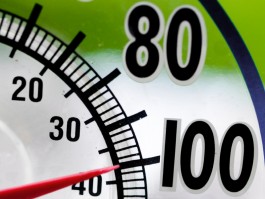
A few weeks ago, we answered four of our customer's most frequently asked questions about temperature calibrations. We realized that only answering the four most common questions we've received doesn't stop the confusion that comes with calibration and its many nuances. So, here are five more FAQ's (and their answers, of course) taken directly from our interactions with our customers.
1. What is a 1-point calibration?
We get this question, in conjunction with the next question, a lot. Many calibration labs, Dickson's included, offer 1-point calibrations. A 1-point calibration works like this: You send your temperature sensor into a lab for calibration. They check the devices accuracy, by comparing it with a standard (a temperature sensor that has been certified by NIST) LINK in a controlled environment. Then, after checking the devices accuracy at a specific point (usually chosen by you, or at a predetermined temperature point by the calibrating lab) they adjust to the devices readings to the correct temperature.
Is you're a little lost, this might help to clear things up. Calibration and Adjustment are two separate terms, often used interchangeably to a fault by calibration labs. "Point" is a loose term used to define a specific temperature reading. For example, 32.7F is a point, and -5C is a point.
An example: A calibration lab determines that a device is reading 24F as 26F. So, the calibration lab adjusts the device two degrees, so that it now reads 24F. However, unless the calibration lab does a span adjustment, that device is adjusted down two degrees at 112F as well. This is also called a zero adjustment: it adjusts the readings of your temperature sensor across the entire scale.
2. What is a 3-point calibration?
A 3-point calibration is a 1-point calibration three times. These are sometimes called Span adjustments, and they are more tedious, yet make a device more accurate across a wider range of temperatures than a 1-point calibration. Instead of adjusting at only say, 2F at 72F, the calibration lab will adjust your temperature readings at for example: 12F, 72F, and 112F by however much their calibration team determines the device is out of range at those temperatures.
3. Which should I get?
Depends on what you are monitoring. If you are monitoring over a wide range of temperatures, you will want the 3-point adjustment. Applications that usually monitor over a wide-range of temperatures include: food manufacturing, transportation, materials manufacturing, medical device manufacturing, and some warehouses. However, if you know that your environment will only range from a couple of degrees, a 1 point calibration may be all you need.
4. When does my calibration expire?
It depends. I know that is a lame answer, but it really does. What does it depend on? Your environment. After reading this, get up and go look at your data logger or chart recorder, and the environment around it. If your unit is in a "harsher" environment, you need to recalibrate more often. Dust, dirt, moisture, air particles all contribute to a device needing to me recalibrated more often. Also if you drop, kick, bump, or damage your device, it will need to be recalibrated more often. At Dickson, we say ALL devices should be recalibrated after 6 months to 1 year of their last calibration. If you are in a harsher environment, you may want to calibrate more often than that.
